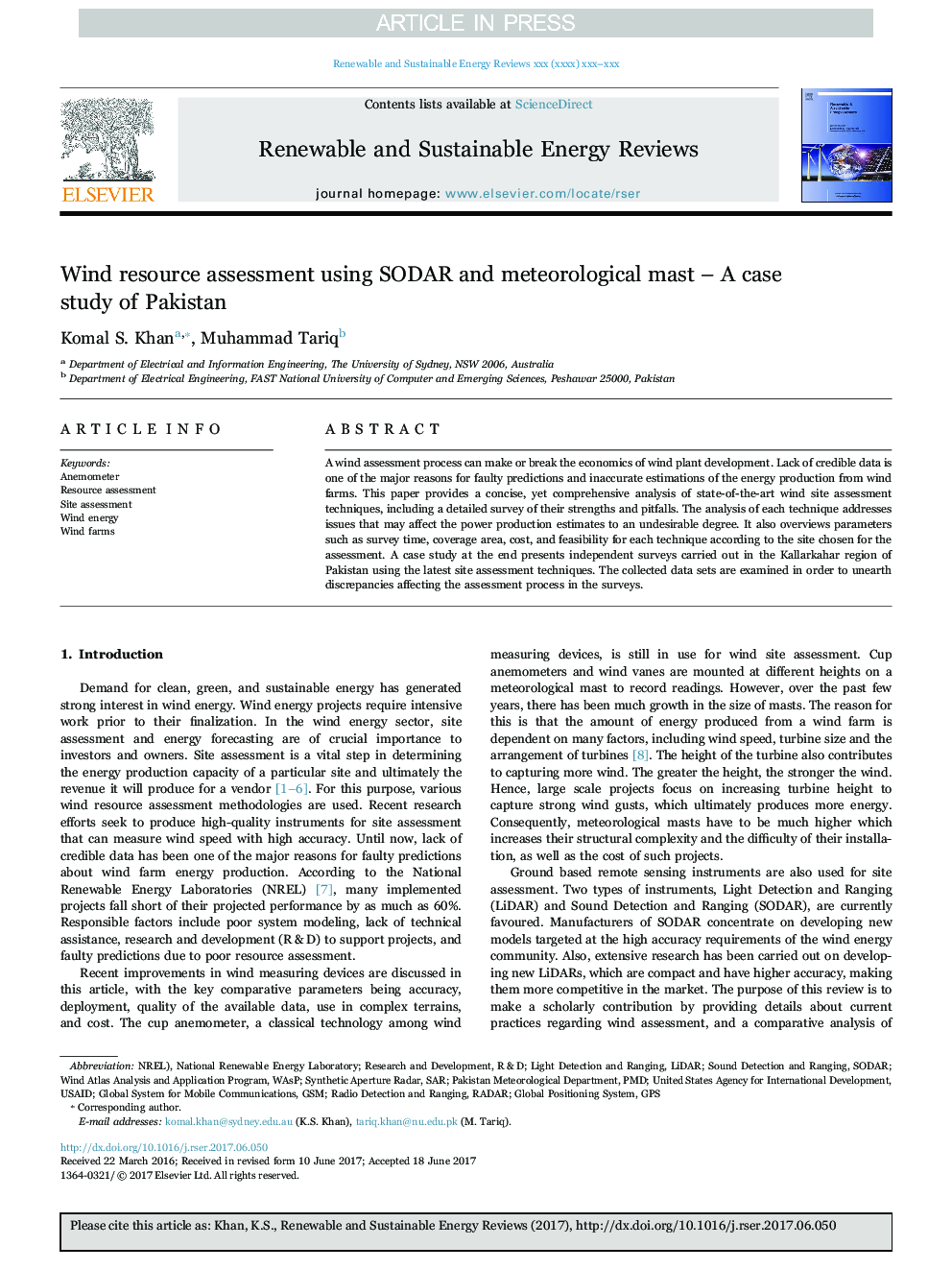| Article ID | Journal | Published Year | Pages | File Type |
|---|---|---|---|---|
| 8112343 | Renewable and Sustainable Energy Reviews | 2018 | 7 Pages |
Abstract
A wind assessment process can make or break the economics of wind plant development. Lack of credible data is one of the major reasons for faulty predictions and inaccurate estimations of the energy production from wind farms. This paper provides a concise, yet comprehensive analysis of state-of-the-art wind site assessment techniques, including a detailed survey of their strengths and pitfalls. The analysis of each technique addresses issues that may affect the power production estimates to an undesirable degree. It also overviews parameters such as survey time, coverage area, cost, and feasibility for each technique according to the site chosen for the assessment. A case study at the end presents independent surveys carried out in the Kallarkahar region of Pakistan using the latest site assessment techniques. The collected data sets are examined in order to unearth discrepancies affecting the assessment process in the surveys.
Keywords
SARWASPPMdNational Renewable Energy LaboratoryUnited States Agency for International DevelopmentSite assessmentResource assessmentWind energyAnemometerResearch and developmentR&DLight detection and rangingUSAIDRadarSynthetic aperture radarGPSSodarGlobal System for Mobile CommunicationsGlobal Positioning SystemLiDARWind farmsGSM
Related Topics
Physical Sciences and Engineering
Energy
Renewable Energy, Sustainability and the Environment
Authors
Komal S. Khan, Muhammad Tariq,
